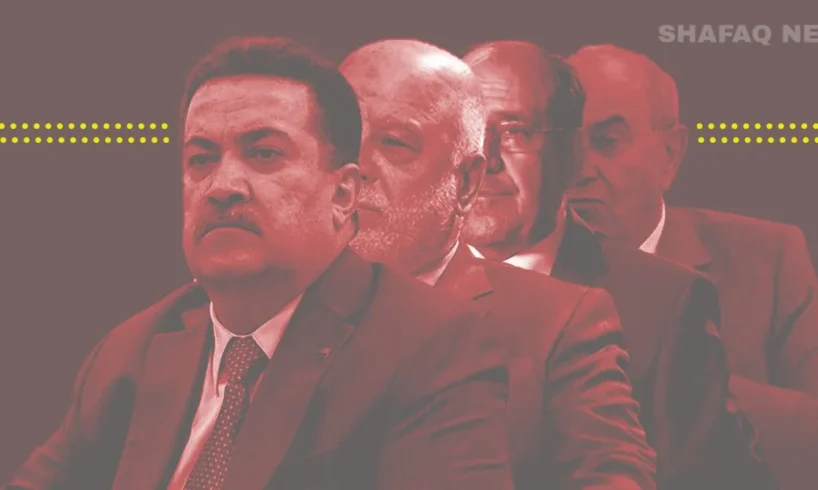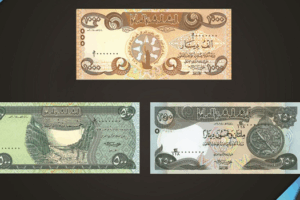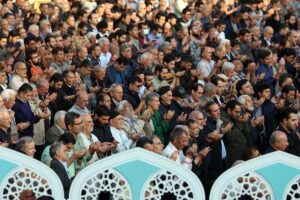
Shafaq News
Two decades after Iraqis voted in their first post-2003
parliamentary elections, one electoral behavior has proven more durable than
the changing laws, alliances, and crises that have shaped the political
landscape: whenever a sitting prime minister enters the race, his electoral
list consistently rises to the forefront of the results.
From Nouri al-Maliki’s dominance in 2014 to Mohammed
Shia al-Sudani’s lead in 2025, this pattern has become a structural feature of
Iraq’s political behavior — one that reshapes expectations about power,
representation, and the balance between state institutions.
The trend did not emerge immediately. Iraq’s first
elections in 2005 were driven by identity-based mobilization at a time when
clerical influence and sectarian alignments dominated political life. Turnout
exceeded 76 percent, the highest in the country’s history, and voter
participation was shaped by the urgency of the moment rather than by executive
performance. But once the first governments were formed, the center of
political gravity began to shift. Instead of aligning with party platforms or
parliamentary agendas, voters increasingly oriented themselves around the
executive, especially the premiership.
In every electoral cycle, the shift was visible. In
2010, Al-Maliki’s State of Law coalition secured 89 seats. Four years later,
while serving his second term, Al-Maliki topped the results with 92 seats and
emerged as the clear national frontrunner. In 2018, Haider al-Abadi entered the
race after leading the war against ISIS and still managed to place third with
42 seats despite a fragmented field. The only interruption to this pattern came
in 2021, when no sitting prime minister appeared on the ballot. Voter turnout
fell to 41 percent — the lowest since 2005 — and the results benefited Muqtada
al-Sadr’s movement, which emerged as the largest bloc in a highly fractured
environment.
With the return of a premier-led list in 2025, the
behavior reappeared: Mohammed Shia al-Sudani’s Al-Ima’ar wal-Tanmiya coalition
advanced to the top of the preliminary results, securing around 46 seats
nationwide.
The 2021 elections serve as the clearest stress test of
this pattern. Without a prime minister competing, voters distributed their
loyalties across opposition figures, protest-aligned independents, and coalitions, producing no dominant list and revealing how central the
executive has become to voter orientation. Rather than undermining the theory,
the 2021 exception reinforces it.
According to Washington-based political analyst Ramadan
al-Badran, this steady shift toward prime-minister-centered voting reflects a
deeper institutional imbalance. He tells Shafaq News that parliaments never
managed to build a meaningful or visible relationship with citizens, while the
executive retained its prominence through service delivery, administrative
decisions, and its role in everyday governance.
Over time, this created a public perception that
authority, responsibility, and evaluation all flow through the prime minister’s
office. Al-Badran warns that this dynamic weakens the intended balance of
power, explaining that voters increasingly “judge the political process almost
entirely through the premiership,” while legislative influence recedes and
rural constituencies grow more marginalized in national strategies.
Research from Chatham House and the Carnegie Middle
East Center supports this assessment, noting that successive governments have
relied heavily on public-sector hiring, municipal projects, and short-term
service campaigns, all of which consolidate visibility in the executive rather
than in parliament or political parties.
Institutional explanations, however, account for only
part of the behavior. Iraqi social researcher Wali al-Khafaji points to a
psychological dimension shaped by decades of authoritarian rule, state
collapse, and violent transitions. He tells Shafaq News that Iraqi society
tends to gravitate toward familiar authority figures, especially in uncertain
environments where institutional trust remains low. This tendency aligns with
UNDP findings on post-conflict political behavior, which show that voters often
choose continuity even when they distrust the broader system.
Al-Khafaji notes that for many Iraqis, especially in
Shia-majority provinces during the 2025 elections, al-Sudani represented the
most stable option in a crowded and contested field.
Read more: Iraq’s 2025 Elections: Old lines, new margins
Yet the intensity of this pattern varies across Iraq’s
regions. In the Shia-majority provinces — such as Babil, Basra, Dhi Qar, and
Maysan — the preference for strong federal executives is more pronounced, and
these provinces carry the largest seat allocations, amplifying the effect.
In Sunni-majority areas like al-Anbar, Saladin, Diyala,
and Nineveh, the pattern is weaker. Local leaders such as Mohammed al-Halbousi,
Khamis al-Khanjar, and Muthanna al-Samarrai often eclipse the role of the prime
minister, and fragmentation remains a defining characteristic of Sunni
politics.
In the Kurdistan Region, an entirely different logic
applies: voters align with entrenched party structures rather than federal
executives. The Kurdistan Democratic Party dominated Erbil and Duhok, while the
Patriotic Union of Kurdistan retained its traditional strength in
al-Sulaymaniyah despite growing competition from New Generation and the
Kurdistan Islamic Union.
Several additional factors reinforce the trend. Sitting
prime ministers benefit from incumbency machinery — visibility in national
media, control over service ministries, the ability to launch projects rapidly,
and access to patronage networks that shape public perception. Their opponents,
meanwhile, rarely form unified or coherent coalitions. Fragmentation weakened
rivals in 2018, repeated itself in 2021, and resurfaced again in 2025. The
electoral system also plays a role: the 2023 amendments restored the
Sainte-Laguë proportional formula, which tends to favor larger, established
lists, almost always including the premier’s coalition.
External actors, such as Iran’s influence in shaping
Shia alliances, and Western preferences for stability-oriented executives,
create environments that structurally advantage incumbents.
These overlapping dynamics point to a broader concern.
When elections repeatedly elevate the sitting prime minister’s list, democratic
alternation becomes limited, and parliamentary authority erodes even when
legislative activity remains high. Policies and political programs are
overshadowed by personal networks, clientelism, and executive visibility. Over
time, the system risks drifting toward what comparative politics scholars
describe as “competitive authoritarianism” — a framework where elections continue
to take place, but the rotation of executive power becomes rare, institutional
checks weaken, and informal mechanisms hold more sway than formal democratic
rules.
Read more: Failure or feat? A bold assessment of PM Al-Sudani’s tenure
Unless Iraq strengthens its party structures, develops
program-based politics, and creates institutional safeguards that rebalance the
relationship between the legislative and executive branches, the cycle is
likely to continue well beyond 2025.
Written and edited by Shafaq News staff.





